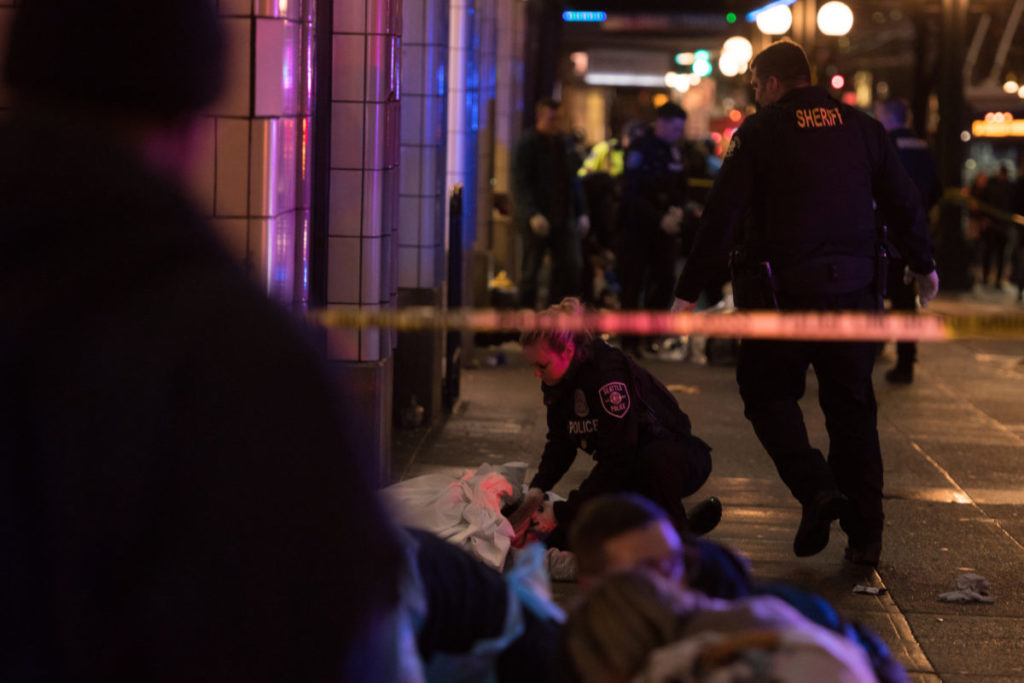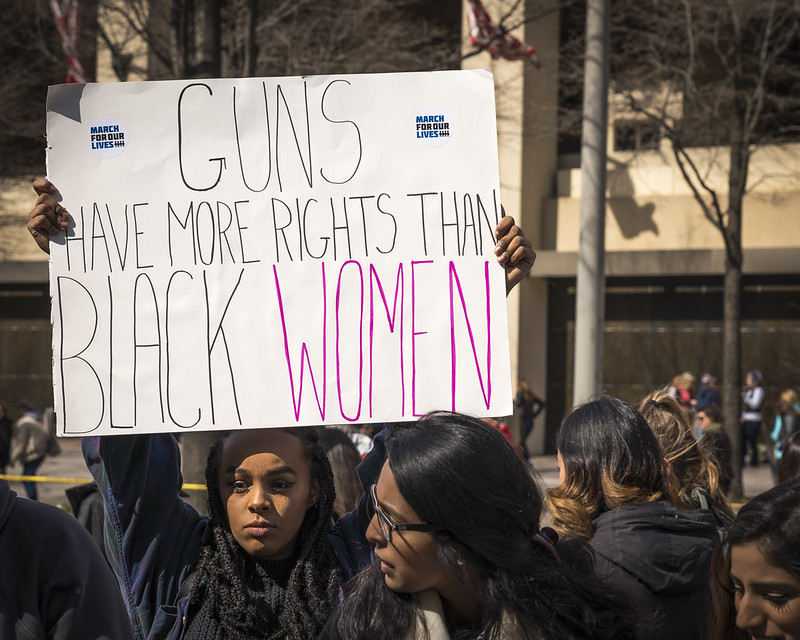
(Note: This article contains disturbing imagery.)
Sandy Phillips has been reliving her worst nightmare since May 24.
That’s the day a man killed 19 children and two teachers in a mass shooting at Robb Elementary School in Uvalde, Texas. She was especially gutted by accounts of what the shooter’s weapon of choice – a semi-automatic rifle – did to his young victims.
She’s been all too aware of its power ever since her daughter, Jessica Redfield Ghawi, was murdered along with 12 others in the 2012 Aurora, Colorado, movie theater shooting. James Holmes used a semi-automatic rifle, too, among other weapons. And like the parents of the students lost in Uvalde, Phillips must now live with the aftermath.
“The head shot is what was so horrifying. It took half of her face away,” she says, her voice full of emotion. Now, “every time I look at a picture of my daughter, I look at the left-hand side of her face – because that was taken … by somebody’s ability to use bullets designed to do the most harm to the human body in war.”
In the wake of the Aurora tragedy, Phillips co-founded Survivors Empowered, a support network for those directly affected by gun violence, with her husband, Lonnie. In the 10 years they’ve been involved in gun-control activism and victim support, they, along with other longtime advocates, have observed patterns among the continuing violence — particularly in terms of gender. Both then and now, the vast majority of mass shootings have been carried out by men. And it’s usually women who get caught in the crossfire, experts add, both literally and figuratively.
“Women are deeply affected by gun violence,” says Sarah Burd-Sharps, senior director of research at gun-control advocacy nonprofit Everytown for Gun Safety – not just as victims and as mothers of lost children, but also as primary caregivers to the injured, or as nurses and teachers. “It’s women … whose lives are forever altered by gun violence.”
She adds, “It’s a crisis.”
A Deadly ‘Man Box’
Part of the problem is the guns themselves. As of 2018, there were roughly 120 firearms for every 100 Americans, researchers at the Small Arms Survey found – making the U.S. the only nation in the world with more guns than people.
And men are more likely to report owning those guns than women (39 percent vs. 22 percent, according to Pew Research Center).
But availability isn’t the only issue. Male mass shooters also tend to have troubling, even violent pasts with women. The Robb Elementary School shooter, for example, frequently sent threatening messages to women he’d met on social media apps, and even shot his own grandmother before the slaughter. He’s part of a larger trend – the Educational Fund to Stop Gun Violence found that 68 percent of mass shooters had histories of domestic violence, and Everytown research shows that 54 percent of mass shootings – generally defined as shootings with four or more victims – happen during domestic violence incidents.
Worse still is that, for some mass shooters, misogyny itself is the motivator. Take Elliot Rodger, who murdered six in a 2014 massacre on the campus of University of California, Santa Barbara. Before, he uploaded a video detailing his reasoning. “I’ve been forced to endure an existence of loneliness, rejection, and unfulfilled desires all because girls have never been attracted to me,” he said. “I don’t know why you girls aren’t attracted to me, but I will punish you all for it.”
Robert Aaron Long was in a similar frame of mind when he murdered eight people, six of them Asian women, who were working in salons and massage parlors in Atlanta. He cited a sex addiction as his motivation, and said that his victims had tempted him. Burd-Sharps points to such acts as manifestations of “the cultural idea that manhood is defined by violence and aggression to maintain power and strength.”
One study refers to this as the “man box” – a confining-yet-common phenomenon in which men are socialized from early ages to equate displays of emotion with weakness, and to instead express themselves through acts of aggression.
Instigating factors – rejection, for example – can bring about “horrific humiliation for some men, who feel perhaps that they’ve not been able to achieve what our culture thinks is ‘true manhood,’” Jacquelyn Campbell, an intimate partner violence expert at Johns Hopkins University, explains. Perpetrators also likely witnessed domestic violence growing up, or were abused themselves, she adds.
The results of perpetuating these cycles and social cues can be deadly – especially when guns are involved, as they exacerbate all domestic violence incidents, regardless of the body count. Nearly 4.5 million American women have reported being threatened with a gun by a partner, according to Everytown; nearly 1 million survivors reported being shot; and every month, roughly 70 women in America lose their lives in incidents where a gun is involved.
In short: Women in the U.S. are 21 times more likely to be murdered with a firearm than women in any other high-income nation overall, and victims of domestic violence are 5 times more likely to die when their abusers can access firearms.
Other broad shifts – namely the Covid-19 pandemic, and restrictions on abortion – compound the problem further still, studies show, with increasing rates of violence against girls and women seen since the start of lockdowns in 2020, and notably high rates of murder reported among pregnant victims.
Moreover, exposure to such violence – as survivors of gun-involved incidents, as members of communities affected by shootings, or simply as Americans living in a nation where there have been over 300 mass shootings so far this year – also increases women’s risks of developing mental health conditions like post-traumatic stress disorder.
Women of color are under particular threat in all of this – especially Black women, for whom the gun homicide rate jumped by 47 percent between 2019 to 2020, and Indigenous women, whose tribes struggle to access existing federal protections against domestic abusers owning guns. This is also true for members of the LGBTQ community, who are twice as likely to be shot than heterosexual or cisgender individuals.
Plus, America is experiencing a groundswell of overt white supremacist speech and actions – and guns worsen that problem, too, on both small and large scales. This ideology was the motivation for 18-year-old Payton S. Gendron, the white male shooter who murdered 10 people and injured three others in a Buffalo, New York, grocery store earlier this year. Domestic terrorist Dylann Roof was also enacting racist violence when he took the lives of nine Black church congregants in Charleston, South Carolina in 2015. Roof admitted that he hoped to start a race war with his actions.
“In an average year, more than 10,300 hate crimes in the United States involve a firearm — more than 28 each day,” Everytown finds. Yet “in most of the U.S., some people convicted of hate crimes can still legally buy and have guns.”
Penny Okamoto, executive director of Survivors Empowered, best sums up this maelstrom of problems by pointing out that “we are not the only people who have violence … or hatred toward” women and minorities – but “we’re the only ones that readily arm those people.”

Gun violence disproportionately hurts women. And women are fed up. (Credit: Mobilus In Mobili, Flickr)
‘Much More to Be Done’
The push for gun-control legislation has been a major uphill battle. Both policies and discourse itself are frequently blocked by conserative politicians, many of whom receive hefty donations from pro-gun outfits like the National Rifle Association – funds Rep. Alexandria Ocasio-Cortez recently referred to as “blood money.”
To be sure, there has been some progress. President Joe Biden recently signed a bipartisan gun control bill into law, the first of its kind to pass in decades. It calls for, among other things, more stringent background checks for the youngest gun purchasers, state-level grant assistance to incentivize the creation of “red flag” laws – and partial closure of the so-called “boyfriend loophole,” which previously allowed abusive but unmarried partners to still purchase firearms.
In a press release, Moms Demand Action founder Shannon Watts called the new federal law a “victory,” but added via comment to The Story Exchange that “the fight doesn’t end here. There’s so much more to be done, on all levels of society, to raise awareness and keep women safe in this country.”
The new law still left out key provisions, as the “boyfriend loophole” portion still allows first-time offenders to buy guns if 5 years has passed without another conviction. At present, state-level protections on this are patchy, with 31 states having laws against selling guns to abusive spouses, and 20 closing the loophole fully.
And, there’s still no ban on especially devastating assault weapons.
Further undercutting the new law’s passage is that it came almost in tandem with a Supreme Court ruling striking down a New York state law prohibiting the concealed carrying of guns – a move that could cause another spike in gun violence.
The result, Watts says, is that “America [still] gives dangerous men easy access to arsenals to carry out heinous acts of violence.”
Thinking – and Acting – Long-Term
When it comes to keeping women safe, it’s clear that a societal reckoning, at the very least, is long overdue. “Our norms of masculinity mix with guns … in a way that is horribly deadly,” says Campbell, at Johns Hopkins.
Several experts who spoke with The Story Exchange encouraged investments in the cities and communities most impacted by gun violence as part of a long-game mitigation strategy – allocating funding for affordable housing, food and public education, especially in underserved areas where acts of desperation may lead to gun violence. (Mental health resources are also touted as a good investment in a safer future, though researchers clarify that, statistically speaking, people with mental health issues are more likely to be harmed, than to do harm.)
And when it comes to drafting future legislation, “we need to be making sure that communities that are historically underrepresented and underserved – yet most impacted [by gun violence] – are the ones helping to craft the solutions for their communities, at all levels,” so that “policies and procedures don’t have unintended consequences,” says Lauren Footman, violence prevention advocate for Delaware County, Pennsylvania.
Women of color, for instance, often find it difficult to access existing protections, and sometimes are placed at risk when police get involved in incidents of domestic violence. Nuances such as this are why solutions and resources must be “culturally sensitive” and created to intentionally benefit “different communities and different women,” she adds.
Addressing the social and emotional learning needs of children is part of the equation, too – especially to break open that “man box” for our nation’s boys. Scarlett Lewis, who lost her son in the horrific 2012 Sandy Hook Elementary School shooting, launched the Jesse Lewis Choose Love Movement to bring such education to schools. If shooters like gunman Adam Lanza “had been able to give and receive nurturing, healing love, [these tragedies] would never have happened,” she told The Story Exchange in 2018. To date, tens of thousands of educators have introduced her curriculum to over 1.5 million children.
Whatever it is, all agree that further action must be taken swiftly, because the toxic swirl of overt hatred and ease of access to firearms is killing roughly 41,000 Americans of all identities each year – over 100 people per day.
And each victim leaves behind loved ones like Phillips. “At some point … everyone in a room, wherever you are, will have been affected” by gun violence, she says – those similarly left standing and traumatized. “That’s where we’re heading, and we’re heading there so quickly.” ◼️




